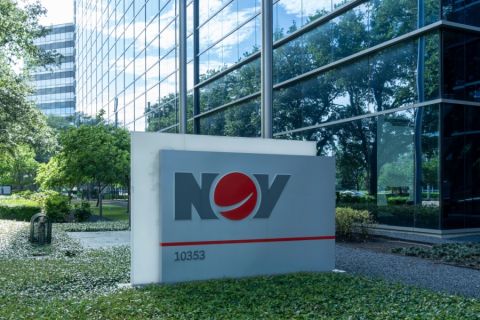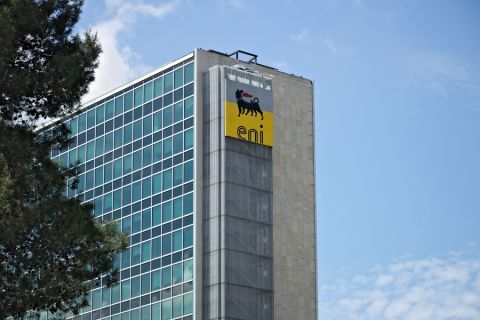Asking questions is the source of knowledge, scientific curiosity is the source of new innovations, and a problem well-stated is the source of new solutions. In the offices of Newfield Exploration Co. it doesn’t take long to realize how serious the engineers are about finding new solutions to three specific challenges: better efficiency, greater ultimate recovery, and less impact to the environment. At the company’s well sites in the Woodford shale, solutions to each of these challenges are the very foundation of success. This is the case of a single fluid delivering greater efficiency and sustainability.
Newfield is one of the largest leaseholders in this play. Leveraging knowledge from operations in the Arkoma Woodford (Oklahoma), the Eagle Ford (Texas), and the Bakken (North Dakota), Newfield works closely with regulatory authorities to stay aligned while gaining efficiencies through pad drilling and longer lateral completions. Always ready to turn difficult endeavors into practical solutions, the company has helped establish a new category of well trajectories: super-extended laterals.
A particular portion of the Woodford shale, the South Cana Woodford (SCW), has presented new opportunities for Newfield to operate at the interface between science and society. With a matter-of-fact approach, the company is unlocking the economic potential of the SCW, recovering condensates and oil. As a result, Newfield has been able to increase its produced hydrocarbon recovery to more than 50% liquids in the past four years.
Geological inconsistency
The SCW lies under the center of Oklahoma in Carter, Garvin, Grady, McClain, and Stephens counties. Although the learning curve in the Woodford is shortened as compared to earlier shale fields such as the Barnett, there is enough geological inconsistency to require new analysis for achieving optimized operational methods. The geology of the SCW is silica-rich, brittle, and layered with thin hydrocarbon-bearing zones above the thicker targeted oil zone, presenting challenges to wellbore architecture.
For Newfield, addressing the risk of annular pressure is a primary focus. In fact, the company seeks to optimize its use of standard practices to achieve wellbore integrity beyond regulatory requirements. In the SCW this has meant lifting the cement high in the annulus and extending zonal isolation. The acquisition of 3-D seismic to avoid natural fractures and the use of oil-based mud (OBM) also have played a critical role in the company’s drilling process.
During the drilling of a well in the SCW, Newfield starts with water-based mud (WBM) for drilling through intermediate sections of the wellbore and then switches to OBM when reaching the zone of interest. This helps provide wellbore stability and protects the formation. The company has found success in drilling super-extended laterals reaching 3,050 m (10,000 ft) or longer, requiring high volumes of expensive OBM during pay-zone drilling.
Moving parts
For both social responsibility and economic reasons, New-field was seeking ways to recover as much OBM as possible. A routine industry practice is to circulate the OBM in the hole to break up any gelation just prior to cementing and then to displace the OBM with WBM. One of the big challenges with this practice is the WBM. It requires a lot of moving parts – literally.
For Newfield, in the early days of drilling in the SCW, WBM required hauling in two leased portable storage tanks per well site, each holding 500 bbl of liquid. The WBM had to be stirred regularly to keep it conditioned for pumping; otherwise it would gel. Plus, timing is important. If left too long, the WBM could require additional additives to address bacterial growth.
Transformation – a core value
Halliburton approached Newfield with an alternative to WBM as a displacement fluid and also an alternative to spacers, flushes, and scavenger cements that could be used instead of WBM.
In spring 2012, as an internal challenge to further enhance wellbore integrity, Newfield assembled a meeting between its completions engineers, drilling manager, and drilling engineers. Prior to the meeting, three Newfield drilling engineers attended a cementing workshop at a Halliburton facility in Duncan, Okla. Aware of Newfield’s need to recover OBM, overcome the complexities of displacement with WBM, and increase wellbore integrity, Halliburton used the workshop opportunity to demonstrate a new fluid under development.
Inviting the Newfield drilling engineers into one of the laboratories, Halliburton demonstrated the mixability of this new fluid and disclosed that it was designed to improve the fluid train that prepares the wellbore to receive cement. Laboratory data showed that this new fluid was demonstrating improved wellbore cleaning attributes and adjustable rheologies that resulted in a fluid interface with OBM that reduced contamination of the mud. What really captured interest was the disclosure that this fluid would pump like a spacer but could be designed to harden if left above top of cement.
Good gets better
The Newfield drilling engineers took information about this new fluid to their meeting with the drilling managers and completions engineering team. What would become known as TergoVis I efficiency fluid was presented as a fluid capable of significantly reducing the intermingling with OBM. The fluid also was able to be accurately designed for density and rheology and mixed on the fly. The team elected to run a job with the new efficiency fluid on the next well. The original goal was simply to improve recovery volumes of the OBM by reducing contamination at the fluid interface. But this new fluid can provide much more when used in the field. Halliburton’s predictive analysis software tool, iCem service, was used to optimize the fluid train by modeling fluid rheological profiles, densities, and volume. As a result, a premium spacer would be run as usual but at a reduced volume and offset by a significant volume of the lower cost efficiency fluid. The ability to increase overall contact time is key to successful wellbore cleaning as prescribed by industry practices. In fact, today Newfield economically runs jobs with as much as 600 bbl of efficiency fluid and only 50 bbl of premium spacer.
The interface between the efficiency fluid and the OBM was immiscible to the point that recovery of the OBM at the surface was greater than 95%. Additionally, the fluid stability and suspension properties were key in Newfield’s extended-reach horizontal wells. There was no apparent settling of the cuttings carried along during the fluid swap, no bridging off, and no filtrate loss – all particularly crucial in long horizontal wells.
However, it was the cement bond logs (CBLs) that told a more significant story. The bond logs for the primary zonal isolation were among the best bond logs ever reviewed by Newfield. Plus, above top of cement the logs revealed that the efficiency fluid had set and adhered to the casing, protecting the casing from possible corrosive effects from wellbore or formation fluids.
New fluid, more progress
Currently, Newfield is planning to use efficiency fluids during primary cementing operations on the Woodford shale wells cemented by Halliburton. The company is able to reuse the OBM on a number of wells, saving significant amounts of money on operations. Use of the efficiency fluid also helps reduce Newfield’s carbon footprint by enabling more complete recovery of the OBM at surface while eliminating delivery of the WBM storage tanks and the diesel-powered stirring process. Additionally, Newfield is benefiting from the enhanced scrubbing effect for more efficient displacement and improved water-wetting of annular surfaces. Last, the company is enhancing wellbore integrity throughout as demonstrated by improved CBLs.
Recommended Reading
NOV Announces $1B Repurchase Program, Ups Dividend
2024-04-26 - NOV expects to increase its quarterly cash dividend on its common stock by 50% to $0.075 per share from $0.05 per share.
Repsol to Drop Marcellus Rig in June
2024-04-26 - Spain’s Repsol plans to drop its Marcellus Shale rig in June and reduce capex in the play due to the current U.S. gas price environment, CEO Josu Jon Imaz told analysts during a quarterly webcast.
US Drillers Cut Most Oil Rigs in a Week Since November
2024-04-26 - The number of oil rigs fell by five to 506 this week, while gas rigs fell by one to 105, their lowest since December 2021.
CNX, Appalachia Peers Defer Completions as NatGas Prices Languish
2024-04-25 - Henry Hub blues: CNX Resources and other Appalachia producers are slashing production and deferring well completions as natural gas spot prices hover near record lows.
Chevron’s Tengiz Oil Field Operations Start Up in Kazakhstan
2024-04-25 - The final phase of Chevron’s project will produce about 260,000 bbl/d.




